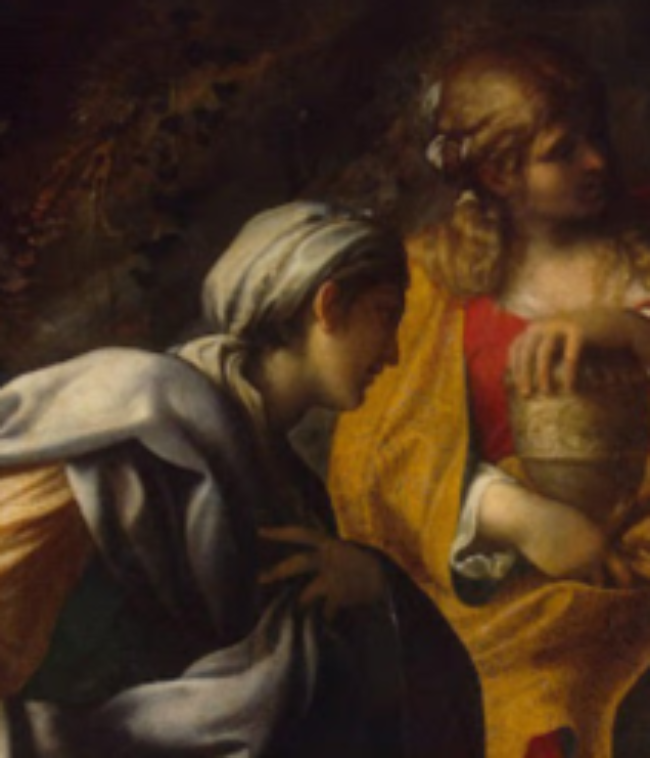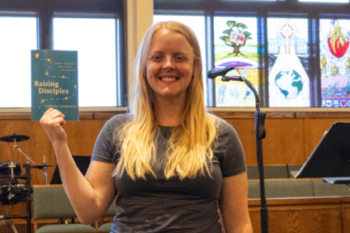Women Who Do: Female Disciples in the Gospels: Book Review
“In this book I argue that we should acknowledge a through line that stretches from the positive portrayal of female disciples in the Gospels to the work of female disciples in our own contexts. We should invite these stories into our conversations and allow them to inform our understanding of what women are capable of and what so many already do in the church” (ix).
Who were Jesus’ disciples? If your answer comes in the form of a list of the twelve men who are called disciples in the Gospels, Holly Carey would tell you that you have left out a lot of people, including many women. In her groundbreaking new book, Women Who Do: Female Disciples in the Gospels (Eerdmans, 2023), Holly Carey analyzes the all-too-frequently-overlooked female disciples who are present with Jesus from the beginning of his life, to his death, and who were there to witness his resurrection. Moreover, Carey not only illustrates that these women were with Jesus all along, but that these women were women of action, and often pursued, served, sacrificed, and followed at times when the male disciples stood still, doubted, denied, or ran away. Carey demonstrates that not only did Jesus have female disciples, but these women were usually the disciples Jesus praised for their faithfulness. In this life-giving read, Carey shines a light on the female disciples often left in the shadows and brings them forward as prime examples of what it looks like to faithfully follow Jesus.
Carey shines a light on the female disciples often left in the shadows and brings them forward as prime examples of what it looks like to faithfully follow Jesus.
In addition to its content, one of the strengths of the book is its structure. Carey devotes one chapter to each of the four Gospels plus Acts to explore how each writer portrays each story in which a female disciple of Jesus is found. This makes the book easy to navigate later for lesson and sermon research. It also allows the reader to walk away with a working knowledge of how the Gospel writers differ in their portrayal of women disciples, as well how the Gospel writers are consistent in their portrayal. Carey brings these texts into conversation with one another while also showing the different purposes and audiences of the Gospel writers.
For example, Carey offers commentary on how Mark and Matthew each portray the hemorrhaging woman and the Syrophoenician/Canaanite woman. According to Carey, Mark views true discipleship through the lens of action. The hemorrhaging woman and the Syrophoenician woman are prime examples of this because of the way they actively pursue Jesus. In Mark 5:25-34, Mark provides an unusual number of details concerning the hemorrhaging woman’s condition and the effort it took for her to reach Jesus, remarkable given Mark’s usual brief writing style. Mark does not include these same details for Jairus, offering a contrast between the two characters. In Mark 7:24-29, Mark notably describes the Syrophoenician woman’s obstacles to Jesus. Carey also remarks on the placement of this story of a mother petitioning for the healing of her daughter so closely to the story of a father petitioning for the healing of his daughter. Additionally, Carey observes how this woman pursues Jesus not once, but twice, “…by tracking him down at his hiding place and by going toe to toe with him in a rhetorical sparring match until she gets what she wants” (60).
When analyzing Matthew’s portrayal of these two women, Carey notes Matthew’s emphasis on their faith. According to Carey, Matthew’s placement of the story of the hemorrhaging woman in Matthew 9:20-22 is significant and intentional. In it, the woman is commended for her great faith, whereas in Matthew 8, Jesus criticizes the twelve for having “little faith” in the midst of the storm. Concerning the Canaanite woman in Matthew 15:21-28, Carey discusses how, while the Markan text is more concerned about what this woman says, the Matthean text examines what she does, which emphasizes her immense faith. The Matthean text also says that the woman is Canaanite, a detail which Carey explains, “…would have called to mind the ancient animosity between Israel and the Canaanites throughout the scriptures” (87). The use of this detail in the Matthean text serves to highlight the woman’s faith all the more by her persistence in spite of being rejected three different times for her ethnicity. Additionally, Carey comments on how Matthew includes the twelve disciples who complain about the Canaanite woman’s shouts and ask Jesus to send her away, whereas Mark makes no such mention of them. This detail offers a stark comparison between the selfless motivations of the Canaanite woman and the selfish reaction of the Twelve. This is just one of many examples of how Carey moves throughout narratives of female disciples in the Gospels, pulling these women from the shadows and into the light so that we can learn from their example.
In addition to this and examples like it from the Gospels, Carey’s comments on female disciples in the book of Acts are especially significant for those who come out of the Stone- Cambell tradition, as churches in this tradition have often viewed the book of Acts as pivotal to developing an ideal ecclesiology. However, Carey notes an important tension regarding this: there are far less stories about women in Acts than there are in the Gospels. This makes Carey’s analysis of female disciples found in the book of Acts all the more important. For example, Carey writes about Tabitha, noting how she is the only woman in scripture who is specifically given the title of “disciple” and how her discipleship in the community of Joppa was so significant within that community that when she dies, a pair of men in the community seek out Peter and ask him to come to Joppa—which Peter does, immediately.
In addition to this and examples like it from the Gospels, Carey’s comments on female disciples in the book of Acts are especially significant for those who come out of the Stone- Cambell tradition, as churches in this tradition have often viewed the book of Acts as pivotal to developing an ideal ecclesiology.
Carey’s Women Who Do is an important addition to the theological library of anyone who seeks to communicate to their church contexts a more holistic picture of the early Jesus movement and the early church, a picture that includes the incredibly important examples of the often-omitted female disciples of Jesus. This, in turn, creates “…space to recognize that women are often model examples of discipleship and to admire what they do” (188), not only in scripture, but in our churches today.
Reference
Carey, Holly J. Women Who Do: Female Disciples in the Gospels. Grand Rapids: Eerdmans, 2023.
Laurel Guy is a current student at Emmanuel Christian Seminary at Milligan. View Emmanuel’s Academic Programs page here.





